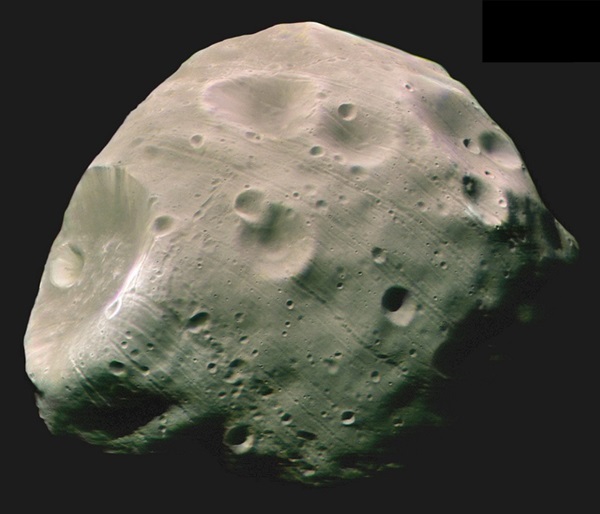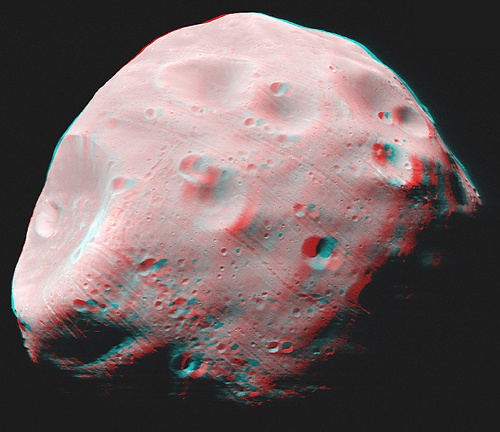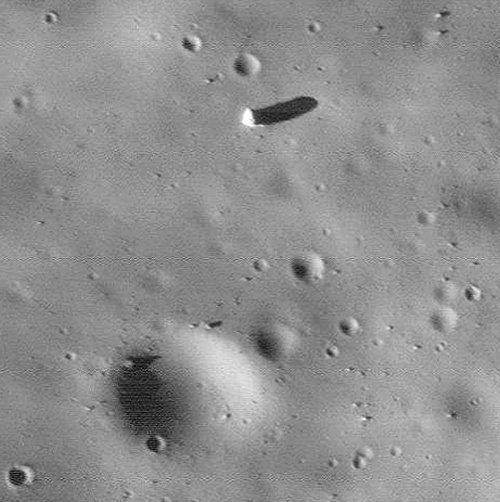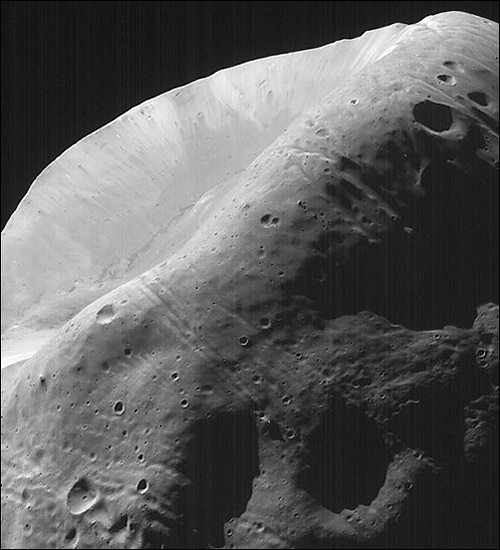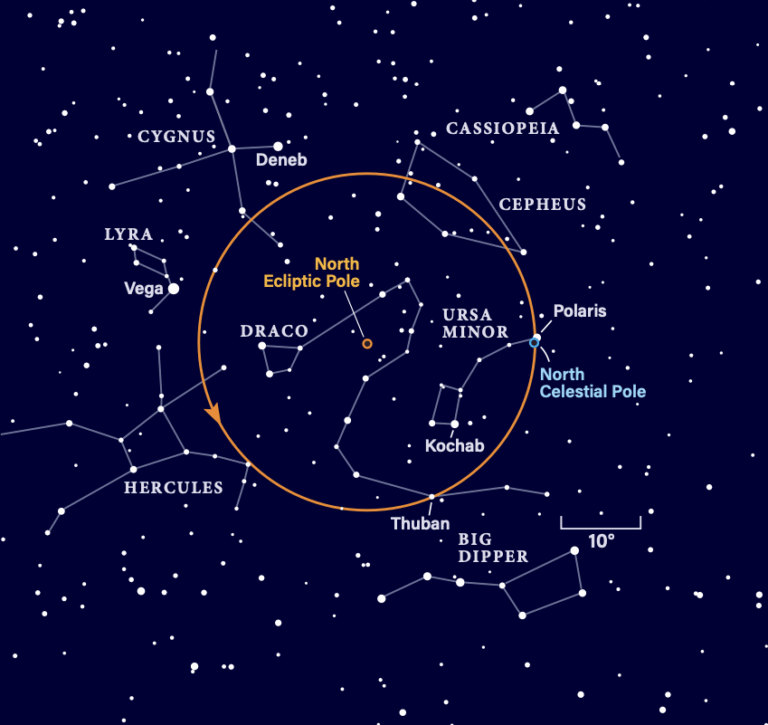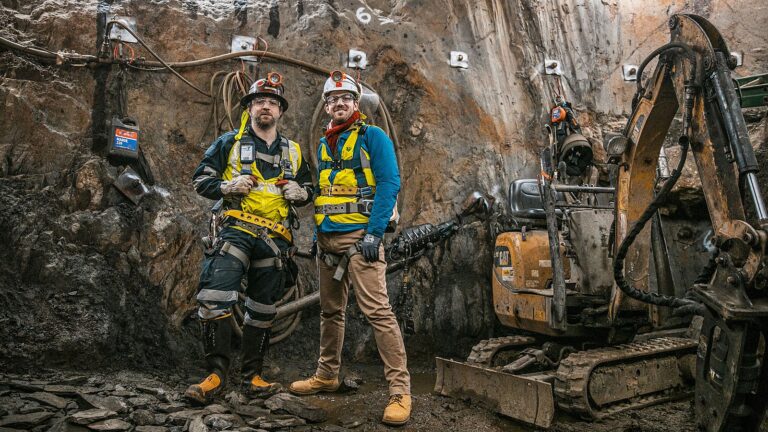Key Takeaways:
Named for fear itself, Phobos, the largest and innermost of the two martian moons, bears a disarming resemblance to a striated potato. Scientists hope new views from the European Space Agency’s (ESA) Mars Express spacecraft will shed light on how it got that way.
Phobos, which orbits Mars 3 times a day, is an elliptical body about 17 by 11 miles (27 by 18 kilometers) in size. Its most striking features are a single impact crater nearly half the moon’s size, and a puzzling, global network of grooves. Many think the two are related because the formation of the 6-mile-wide (10 km) crater, named Stickney, probably came close to shattering the moon.
When Mars Express periodically makes a close approach to Phobos, the spacecraft turns away from the Red Planet and trains its High Resolution Stereo Camera (HRSC) on the martian moon. Since entering Mars orbit December 25, 2003, the probe has whisked past Phobos 6 times, returning images with ever-greater resolution. The probe’s most recent pass, August 22, 2004, brought it within 175 miles (200 km) of the moon.
Mars Express shot 10 different images of Phobos at nearly the same time — among the most detailed views ever seen. They cover more of the moon’s illuminated surface than those of previous missions, plus the best pictures aren’t blurred by spacecraft motion, a problem with some high-resolution images from other missions.
Because the same side of Phobos always faces the Red Planet, Mars Express images show only that hemisphere. Crater walls on the moon show dark streaks from landslides, proof that gravity just 1/1000th that of Earth’s shapes the terrain. On Phobos, a 150-pound (68 kilogram) person would weigh only 2 ounces (57 grams).
Although Phobos appears bright in spacecraft images, it reflects only about 6 percent of the light it receives — little better than a freshly paved parking lot. In fact, the dark surfaces of Phobos and the outer martian moon, Deimos, lead scientists to suspect kinship with carbonaceous-chondrite asteroids. Both moons may have been wayward asteroids captured into orbit around the Red Planet.
Phobos appears to be nearing Mars by 6 feet (1.8 meters) every century, a rate that will crash it into Mars some 50 million years from now. But the little, fractured moon may not even survive to reach the surface. As Phobos nears the planet, martian tides may succeed where the Stickney impact failed — they may destroy the moon. If so, future astronomers will witness the moon’s transformation from a dark satellite to a bright new ring of rock and dust.

